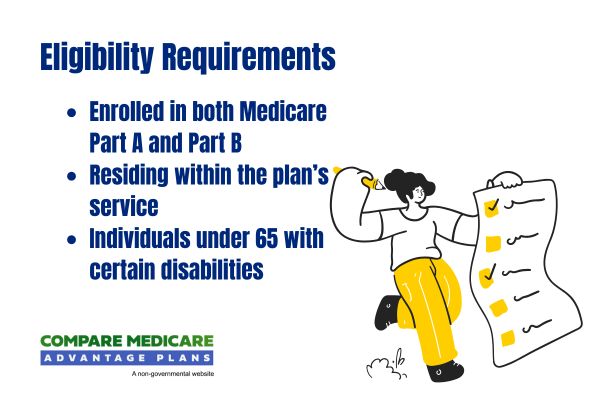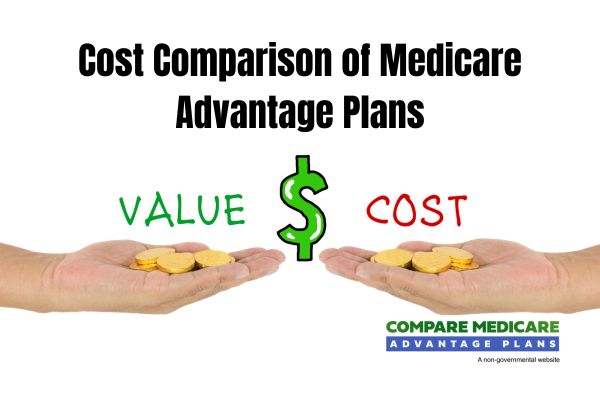Healthfirst Medicare Advantage Plans 2026
Curious about the potential Healthfirst Medicare Advantage plans
Key Takeaways
- Certain Healthfirst Medicare Advantage Plans might provide enhanced benefits beyond Original Medicare, which may include dental, vision, and hearing coverage.
- The plans are available in various types, including HMO, PPO, and Special Needs Plans (SNPs), each catering to different healthcare needs and allowing flexibility in provider access.
- Eollment periods include the Annual Enrollment Period from October 15 to December 7, allowing beneficiaries to select or switch plans, along with various Special Enrollment Periods for qualifying life events.
Compare Plans in One Step!
Enter Zip Code
Understanding Healthfirst Medicare Advantage Plans 2026

Some Healthfirst Medicare Advantage Plans may offer additional benefits compared to standard Medicare, which might include coverage for dental, vision, and hearing services. Members will likely have access to a broad network of over 100,000 healthcare providers, with options for both in-network and out-of-network care.
Certain plans may also be specifically tailored for dual-eligible individuals, potentially combining Medicare and Medicaid coverage benefits into one comprehensive coverage. With Healthfirst Medicare Advantage Plans, you could get the best of both worlds – extensive coverage and potentila financial savings. Imagine having all your healthcare needs met under one plan without the hassle of multiple insurances.
Types of Healthfirst Medicare Advantage Plans Available
Healthfirst will likely offer various Medicare Advantage plans, each designed to meet different healthcare needs. The main types available include Health Maintenance Organization (HMO) Plans, Preferred Provider Organization (PPO) Plans, and Special Needs Plans (SNPs). Each plan type offers unique benefits and caters to specific healthcare requirements, ensuring a suitable option for everyone.
HMO Plans
Healthfirst’s HMO plans require members to use a network of providers for most care, except in emergencies. These plans emphasize coordinated care and might offer additional benefits including prescription drugs, dental, vision, and hearing services. Members do not need referrals to access in-network specialists, streamlining the process of getting necessary care.
HMO plans could potentially offer lower monthly premium for eligible members. Preventive dental services, including checkups and cleanings, may also come at no cost for members. Additionally, the maximum out-of-pocket limit for in-network services could provide financial protection against high medical costs.
PPO Plans
PPO plans allow members to receive care from any provider, but offer lower costs for using in-network services. These PPO plans allows members to see any doctor or specialist without a referral, enhancing access to care.
PPO plans typically feature a wider network of healthcare providers compared to HMO plans, allowing for greater choice in medical services. These plans may also include additional benefits such as vision and dental coverage, possibly enhancing overall member care.
Coverage is available for both in-network and out-of-network providers, with different cost-sharing arrangements.
Special Needs Plans (SNPs)
Healthfirst’s Special Needs Plans cater to individuals with specific health conditions or financial situations, integrating Medicare and Medicaid benefits. These plans offer targeted benefits, care management services, and specialized healthcare to eligible members.
The three primary types of SNPs are:
- Chronic Condition SNPs (C-SNPs), which cater to individuals with specific chronic conditions
- Dual Eligible SNPs (D-SNPs), designed for those who qualify for both Medicare and Medicaid
- Institutional SNPs (I-SNPs), which serve individuals residing in institutions such as nursing homes
All SNPs must include Medicare Part D prescription drug coverage to ensure beneficiaries can effectively manage their health needs.
These plans are tailored to provide focused medical care to individuals with complex healthcare needs.
Overview of Healthfirst Medicare Advantage
Some Healthfirst Medicare Advantage plans could potentially enhance Original Medicare coverage by offering additional services such as prescription drug coverage, dental, vision, and hearing benefits. Healthfirst will likely provide various plan options to cater to diverse healthcare needs, likely integrating long-term care with traditional medical benefits.
The vision benefit might include routine vision and hearing exams, along with allowances for eyeglasses and hearing aids.
Covered Services and Possible Benefits

Healthfirst Medicare Advantage plans include all essential services covered by Original Medicare, and some might integrate additional benefits such as:
- Prescription drug coverage
- Dental benefits
- Vision benefits
- Hearing benefits
Members could potentially have access to these additional services, likely enhancing their overall healthcare experience.
Enrollment Process for Healthfirst Medicare Advantage Plans
Enrollment for Healthfirst Medicare Advantage Plans can be completed by using this website or by calling our licensed agents using the number on this webpage. The process involves confirming eligibility and selecting a suitable plan based on individual needs.
Enrolling during designated periods ensures timely benefits.
When to Enroll
Specific times during the year are designated for enrolling in Healthfirst Medicare Advantage Plans. Individuals turning 65 can enroll in Medicare during a seven-month period that includes the three months before, the month of, and the three months after their birthday.
If an individual misses their Initial Enrollment Period, they can enroll during the General Enrollment Period, which runs from January 1 to March 31 each year.
Different enrollment periods
Enrollment periods include the Initial Enrollment Period, Open Enrollment Period, and Special Enrollment Period. The Open Enrollment Period occurs annually from October 15 to December 7, allowing beneficiaries to enroll in or switch their Medicare Advantage Plans.
Special Enrollment Periods are available for individuals who experience certain life events, such as moving or losing other health coverage, allowing them to enroll outside standard periods.
OEP, AEP, Special Enrollment
The Open Enrollment Period (OEP) typically runs from January to March, allowing beneficiaries to make changes to their plans. The Annual Enrollment Period (AEP) allows Medicare beneficiaries to switch or enroll in Medicare Advantage plans and is the primary time for plan changes.
Special Enrollment Periods (SEPs) may occur if beneficiaries experience qualifying events, such as moving, losing existing coverage, or changes in household composition.
Possible Costs Associated with Healthfirst Medicare Advantage Plans
The potential expenses for some Healthfirst Medicare Advantage Plans may vary based on the selected coverage and personal circumstances. Certain plans may offer lower monthly premium, depending on the specific plan and member eligibility.
Premiums and Co-Pays
Members might need to pay for both a Part B premium and an additional premium specific to the Medicare Advantage plan. Some plans may even offer lower monthly premiums and co-pays.
Out-of-Pocket Maximums
Some Healthfirst Medicare Advantage Plans might include a maximum out-of-pocket limit for yearly healthcare expenses. Once the out-of-pocket maximum is reached, these plans cover 100% of the costs for covered medical services.
The out-of-pocket maximums will likely differ between plans, impacting overall costs for members receiving care.
How to Qualify for Healthfirst Medicare Advantage Plans

Individuals must be 65 or older, or under 65 with specific disabilities or kidney failure to qualify for Medicare coverage. Enrollment in Medicare should be initiated three months prior to turning 65 to avoid any delays.
If under 65 with a disability, enrollment in Medicare Part A and B occurs automatically after receiving Social Security benefits for two years. The Initial Enrollment Period for Medicare lasts seven months, including three months before and after the month of turning 65.
Individuals can qualify for the Medicare Savings Programs, which assists with costs, based on updated income limits.
Contracted Network and Access to Care
Healthfirst Medicare Advantage plans will likely offer members access to a broad range of healthcare services, including both in-network and out-of-network providers, although out-of-network services may incur higher costs. Members have access to a care management team, which helps coordinate medical services and develop personalized care plans. Emergency care is covered regardless of whether the provider is in-network or out-of-network.
With a large network of healthcare professionals, members have various options for their medical care. This extensive network and access to care could potentially ensure that members receive the necessary medical attention, possibly enhancing their overall healthcare experience.
Comparing Healthfirst Medicare Advantage Plans to Original Medicare
Certain Healthfirst Medicare Advantage plans might include additional benefits such as dental and vision care, which Original Medicare does not cover. Some Healthfirst Medicare Advantage plans may offer these additional benefits, potentially enhancing the coverage provided by Original Medicare.
Coverage Differences
While Original Medicare covers hospital and medical services, Medicare Advantage plans might vary in the network of providers available.
Some Medicare Advantage plans may also cover additional services that Original Medicare excludes, such as dental, vision, and hearing coverage. Original Medicare does not provide an out-of-pocket maximum, while some Medicare Advantage plans might include annual limits on out-of-pocket costs.
Cost Comparisons

Some Healthfirst Medicare Advantage plans may feature lower out-of-pocket costs and monthly premiums compared to Original Medicare. However, members still need to pay the Part B premium for Original Medicare.
Members of Healthfirst Medicare plans could potentially have lower out-of-pocket costs for services compared to those relying solely on Original Medicare. Copays for certain services under some Healthfirst plans may be lower than the costs associated with Original Medicare’s deductibles and coinsurance.
Emergencies and Referrals
Healthfirst Medicare members may continue to receive benefits during emergencies, including coverage at non-contracted facilities. In emergencies, referral requirements and prior authorizations may be waived for Healthfirst Medicare members, ensuring that immediate care is accessible.
Healthfirst allows out-of-network services at in-network cost-sharing during public health emergencies. Changes that benefit Healthfirst members in emergencies can be implemented immediately, bypassing the usual 30-day notification period. If a member receives a surprise bill for emergency services, they are protected from balance billing and can dispute charges.
Summary
Healthfirst Medicare Advantage Plans
Frequently Asked Questions
→ Are there any 5-star Medicare Advantage plans?
Yes, based on data from recent years, there have been several Medicare Advantage plans that have received a 5-star rating from CMS, with standard plans available in several states. These plans represent the highest quality of care and service.
→ What are the main types of Healthfirst Medicare Advantage Plans available?
Healthfirst Medicare Advantage Plans primarily include HMO, PPO, and Special Needs Plans (SNPs), designed to meet diverse healthcare requirements. Choose the plan that best fits your health needs and preferences.
→ When can I enroll in Healthfirst Medicare Advantage Plans 2026 ?
You can enroll in Healthfirst Medicare Advantage Plans during your Initial Enrollment Period around your 65th birthday, the Annual Enrollment Period from October 15 to December 7, or during Special Enrollment Periods if you meet specific qualifications.
→ What additional benefits could Healthfirst Medicare Advantage Plans offer compared to Original Medicare?
Some Healthfirst Medicare Advantage Plans may offer additional benefits such as dental, vision, and hearing coverage, and sometimes along with prescription drug plans, potentially enhancing your healthcare experience.
→ How might the costs of Healthfirst Medicare Advantage Plans compare to Original Medicare?
Certain Healthfirst Medicare Advantage Plans might offer lower out-of-pocket costs, low monthly premiums, and sometimes additional benefits not provided by Original Medicare, possibly making them a cost-effective option for many beneficiaries.

ZRN Health & Financial Services, LLC, a Texas limited liability company





